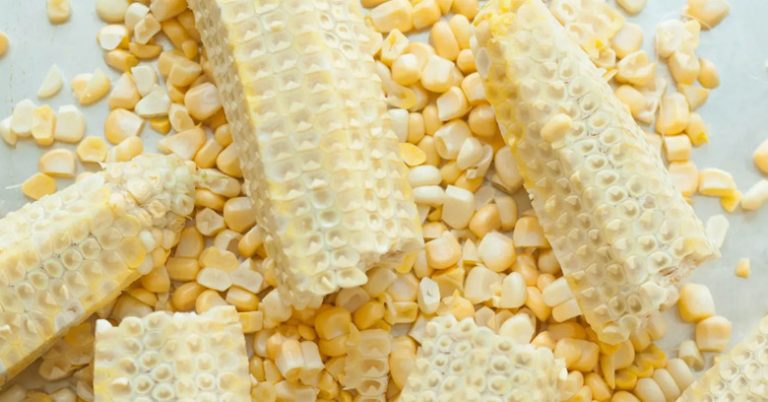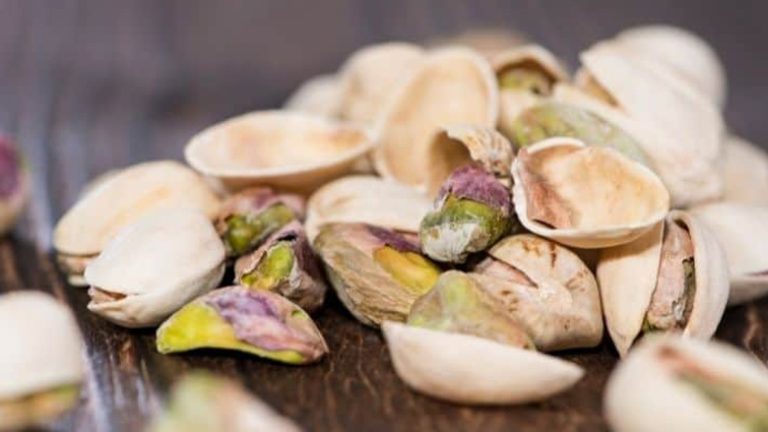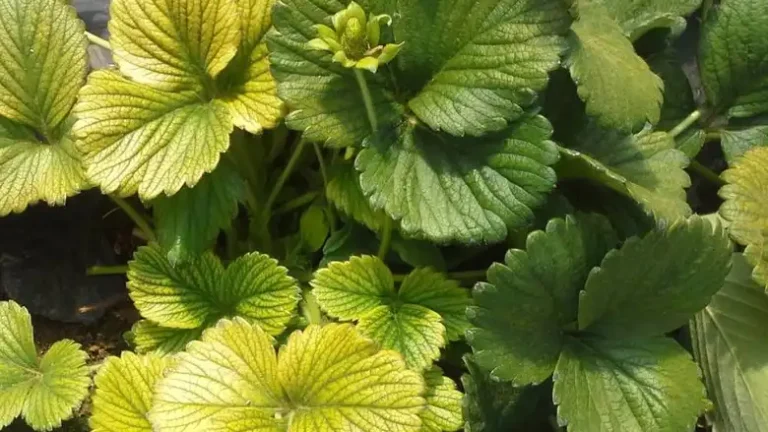Why Are My Basil Leaves Curling [Causes and Solutions]
Whether you’re a seasoned gardener or just dipping your toes into the world of herbs, encountering curled basil leaves can leave you scratching your head. Basil, with its aromatic leaves and versatile uses, is a prized addition to any garden or kitchen. But when those leaves start curling up, it’s a sign that something’s amiss.
In this comprehensive guide, we’ll dive into the nitty-gritty of basil growth and leaf health. From the pesky pests that could be wreaking havoc to environmental factors that might be causing the curl, we’ve got you covered with practical solutions to restore your basil’s vitality.

Understanding Basil Growth and Leaf Health
Before we unravel the mysteries behind curled basil leaves, let’s take a moment to understand the basics. Basil is a sun-loving herb that thrives in warm weather, boasting a wide array of flavors from sweet to spicy. Its leaves, the stars of the show, are usually broad, tender, and vibrant green when healthy. Now, when these leaves suddenly start curling, it’s a red flag that something isn’t quite right in your basil haven.
Common Causes of Basil Leaf Curling
Basil leaves curling up? Don’t fret – you’re not alone in this gardening conundrum. Basil’s lush leaves are its crown jewel, and when they start curling, it’s like nature’s way of raising a red flag. Here are some key suspects to consider:
Pests and Diseases
In the world of gardening, pests are the unwelcome visitors that can turn your basil bliss into a leafy nightmare. Aphids and whiteflies, those miniature garden gluttons, have a taste for basil leaves that can lead to a distressing curl. Diseases, too, can wreak havoc – fungal infections love to set up camp when air circulation is poor, and excess moisture is present.
Environmental Factors
Your basil’s environment plays a bigger role than you might think. Factors like temperature, humidity, and light exposure can all contribute to those curling leaves. Basil prefers a sunny disposition, but too much direct sunlight, especially in intense heat, can stress it out and cause curling. On the flip side, overly chilly temperatures can also lead to leaf curling.
Watering and Moisture Issues
Water, the elixir of life, can sometimes turn into the villain. Overwatering and underwatering are both prime culprits when it comes to basil leaf curling.
Overwatering
Too much water can suffocate your basil’s roots and create an environment where diseases thrive. The leaves, unable to handle the excess moisture, start curling as a sign of distress.
Underwatering
Conversely, if your basil is parched, its leaves will also curl. Underwatering can lead to stress, causing the leaves to curl in an attempt to conserve water.
Nutrient Imbalances
Think of nutrients as your basil’s daily vitamins. When these are out of balance, your basil might not be feeling its best. Nutrient deficiencies or excesses can lead to curled leaves, among other signs of distress.
Root-Related Issues
The roots are the unsung heroes of your basil plant. But when they’re not happy, neither is your basil. Root rot, caused by overly wet soil or poor drainage, can lead to curling leaves as the plant struggles to absorb water properly.
Preventive Measures and Solutions for Basil Leaves Curling
Basil, with its aromatic leaves and versatile uses, is a beloved addition to gardens and kitchens alike. However, when those vibrant leaves start to curl, it’s a sign that your basil might be facing some troubles. Fret not, for in this guide, we’ll delve into the world of preventive measures and solutions to bring your basil back to its flourishing self.
Pest Management
Aphids, whiteflies, and other pests can turn your basil’s home into a feeding frenzy, causing those leaves to curl in distress. The good news is, that you can wage an organic war against these intruders. Let’s talk about three allies: neem oil, insecticidal soaps, and the art of companion planting.
Neem Oil: This natural oil acts as a formidable pest repellent, disrupting the pests’ growth and development. A simple application can help keep aphids and whiteflies at bay, allowing your basil’s leaves to unfurl with grace.
Insecticidal Soaps: Gentle yet effective, these soaps target pests by suffocating them upon contact. Their non-toxic nature makes them a safe bet for your basil. A little spray can go a long way in safeguarding those precious leaves.
Companion Planting: Basil’s got buddies that pests can’t stand. Planting it alongside marigolds, for instance, can deter aphids and nematodes. Nature’s way of teamwork, if you will.
Disease Prevention
Fungal infections can sneak up on your basil, causing leaves to curl as a distress signal. To prevent this sneaky invasion, focus on these pointers:
Air Circulation: Your basil loves a breath of fresh air. Ensuring that there’s enough space between plants and allowing air to circulate can create an environment where fungi struggle to thrive.
Copper-Based Fungicides: When prevention needs a bit of backup, copper-based fungicides step in. These agents inhibit fungal growth, keeping your basil’s leaves happy and curl-free.
Optimal Environmental Conditions
Basil thrives within a specific set of environmental parameters. Give it the right conditions, and you’ll see those leaves stretching out to their full potential.
Temperature: Aim for that sweet spot between 70 to 85°F (21 to 29°C). Anything too chilly or scorching can make your basil’s leaves retreat.
Humidity: Basil enjoys a moderate humidity level. If it gets too humid, the risk of fungal infections increases. Keep it around 40 to 50% for a happy basil.
Light Exposure: Basil loves sunlight, but it doesn’t want to be roasted. Six to eight hours of sunlight a day is ideal. When the sun gets a bit too enthusiastic, shelter your basil with a shade cloth during intense heat.
Watering Techniques
Water – the elixir of life for your basil. But just like too much water can drown your plant, too little can leave it thirsty and curling its leaves in protest.
Moderation: Water your basil moderately. Let the top inch of soil dry out before giving it another drink. This balance helps prevent both overwatering and underwatering.
Soil Drainage: Basil’s roots despise soggy feet. Opt for well-draining soil and pots with proper drainage holes. This ensures excess water doesn’t hang around, causing trouble.
Nutrient Management
Just like you need a balanced diet, so does your basil. Nutrient management is key to preventing those leaves from curling.
Balanced Fertilizers: Feed your basil with balanced fertilizers. The N-P-K ratio (nitrogen, phosphorus, and potassium) should be even to promote healthy growth.
Organic Compost: Think of compost as a buffet for your basil. It’s packed with nutrients that contribute to strong, vibrant leaves. Mix it into the soil during planting and as a top dressing during the growing season.
Periodic Soil Testing: Be your basil’s personal nutritionist. Periodic soil testing can tell you what nutrients your basil is missing or has in excess. This empowers you to adjust its diet accordingly.
Root Health
Healthy roots are the foundation of a thriving basil plant. To prevent leaf curling, give those roots the care they deserve.
Planting Depth: When you plant basil, make sure it’s at the right depth. Planting too shallow or too deep can stress out your plant, leading to curled leaves.
Soil Preparation: Basil roots appreciate well-prepared soil. Add organic matter like compost to improve soil structure and create a cozy home for those roots.
Root Inspection: Don’t forget to peek beneath the surface. Occasionally check your basil’s roots for signs of rot. If they’re brown, mushy, or emit an unpleasant odor, it’s time to take action.
By understanding these preventive measures and solutions, you’ll be equipped to tackle the issue of basil leaves curling. With a little care and attention, your basil can thrive once again, displaying its lush, vibrant leaves for you to enjoy.
Frequently Asked Questions (FAQs)
Why are my basil leaves curling up?
Don’t panic – we’ve got answers. Curled leaves might be a distress call from your basil, and we’re here to decode it.
Can overwatering cause basil leaf curling?
Absolutely. Too much of a good thing (water) can stress out your basil, causing its leaves to curl.
What pests attack basil plants and lead to leaf curling?
Aphids and whiteflies are prime suspects. But fear not, we’ve got tricks up our sleeves to bid them adieu.
How can I prevent fungal infections in my basil plants?
Good air circulation and copper-based fungicides are your secret weapons against fungi invasion.
Is direct sunlight responsible for basil leaf curling?
A little sun is great, but too much can lead to leaf curling. Shade cloth to the rescue!
What’s the right way to water basil to avoid leaf curling?
Moderation is key. Keep the soil moist, not soggy, and ensure proper drainage.
Conclusion
And there you have it, the unraveling of the mystery behind your curling basil leaves. From unwelcome pests to sneaky fungal infections, you’re now armed with the knowledge to turn your basil’s fate around.
Remember, basil care is a delicate balance of science and art, where proper watering, nutrient management, and vigilant pest control are your tools for a thriving herb garden.
![Can You Compost Cooked Corn Cobs [Explained]](https://gardensuggest.com/wp-content/uploads/2023/08/Can-You-Compost-Cooked-Corn-Cobs-1-768x402.jpg)

![Why Are My Sunflower Leaves Turning Brown [Exploring Causes and Solutions]](https://gardensuggest.com/wp-content/uploads/2023/09/Why-Are-My-Sunflower-Leaves-Turning-Brown-768x432.webp)


